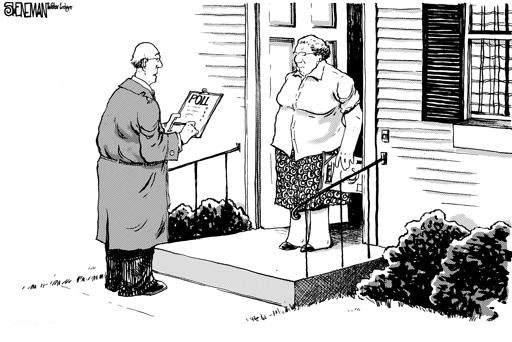As the election season begins to heat up for November, we wanted to offer an overview of polling — the starting place for every campaign — large or small.
How to Get the Most From Your Polling
Taking a poll — it’s something every campaign thinks about and considers. But what should you poll on? There are lots of questions you could try to get answered, but doing a good poll is about asking “need to know” questions, rather than “nice to know”. So what’s most important?
Here are some ideas to consider.
Understanding the Mood of the Electorate and the Issue Landscape
One of the fundamental objectives taking a poll can help accomplish is understanding the mood of voters and what issues matter most to them. If voters believe things are on the “right track,” you should run a very different kind of campaign than if there is consensus that things are going badly and there is need for change. These visceral feelings have a disproportionate impact on whether incumbents are reelected or whether a wave of new people is swept into office. Understanding the mood of your likely voters is just that important.
Along with the voters’ mood, it is essential to understand what are the issues that people care about most. Is the electorate focused on a singular issue, or two, or is opinion very diffuse and there is consensus of what most plagues voters? You must know what issues are on people’s minds.
The Horse Race
Who is ahead and who is behind? A poll allows you to get a scientific snapshot of what voters are thinking at that moment. And the real advantage is not just knowing what this number is overall, but also understanding how different voters feel — young vs. old, male vs. female, as well as differences by race and political party. This is crucial information for identifying who is in your camp and needs to be revved up to vote and who is undecided and perhaps persuadable.
One way to gauge who are your strongest supporters is by asking them whether they will put a lawn sign out in their yard. If they say yes, then give ’em a sign! Political signs are a great way to increase visibility for your campaign and offer a simple way that you can begin to put your supporters and volunteers to work getting your message out.
Messaging
Perhaps the most important part of your poll at the beginning or the middle of a campaign is testing messaging — how do you most effectively build an argument for your candidacy in a way that will cut through the clutter. There are many ways you can try to persuade voters to consider your candidacy. The real question is what is most effective in breaking through when you get only one quick shot. Your window for being heard is narrow and short, so you must figure out how you can succinctly deliver your message.
Creating Contrasts with Your Opponents
Whether you want to call them attacks or contrasts, elections fundamentally are about choices and thinking about low information voters. It’s important that you make the choice very clear for voters. Just as you will have a limited amount of time to communicate your message, this is also the case with presenting contrasts and defining your opponents. You may get only one shot, so make sure you know what works.
Target Voters
Typically, the last section of a survey is designed to capture demographic information about the people who were polled — allowing you to cross tabulate the data and, in doing so, build different voter prototypes and personas.
This data can be extremely useful by crossing the answers to critical questions with the answers to these demographic questions. You might want to explore what different age groups think about certain issues and what different racial groups express as their candidate preferences. It’s often useful to create personas or profiles of your typical likely voters; those who are almost certain to be in your opponent’s camp; and “swing voters,” those who you need to target over the course of the campaign.
Campaigns often create fictitious names and identities for these personas and create pictures of them.Doing this helps campaigns and your campaign workers easily identify who needs to be revved up to vote (your base) and who needs to be persuaded (swing voters). Visual cues are often a very effective way of facilitating this.
So focus your poll on these key areas that are not “nice to know,” but “need to know” information.
For information about our fast and cost-effective DIY polling options, click here.


It’s great that this article talks about the importance of testing messaging in order to determine which ways will be most effective to persuade voters to consider your candidacy. A great way to do this would be to research the different methods, such as political phone banking or video advertisements, and then try out the ones that seem to be most effective. If you aren’t seeing good results, it would probably be a good idea to switch methods or talk to the professionals to get their advice on your campaign.